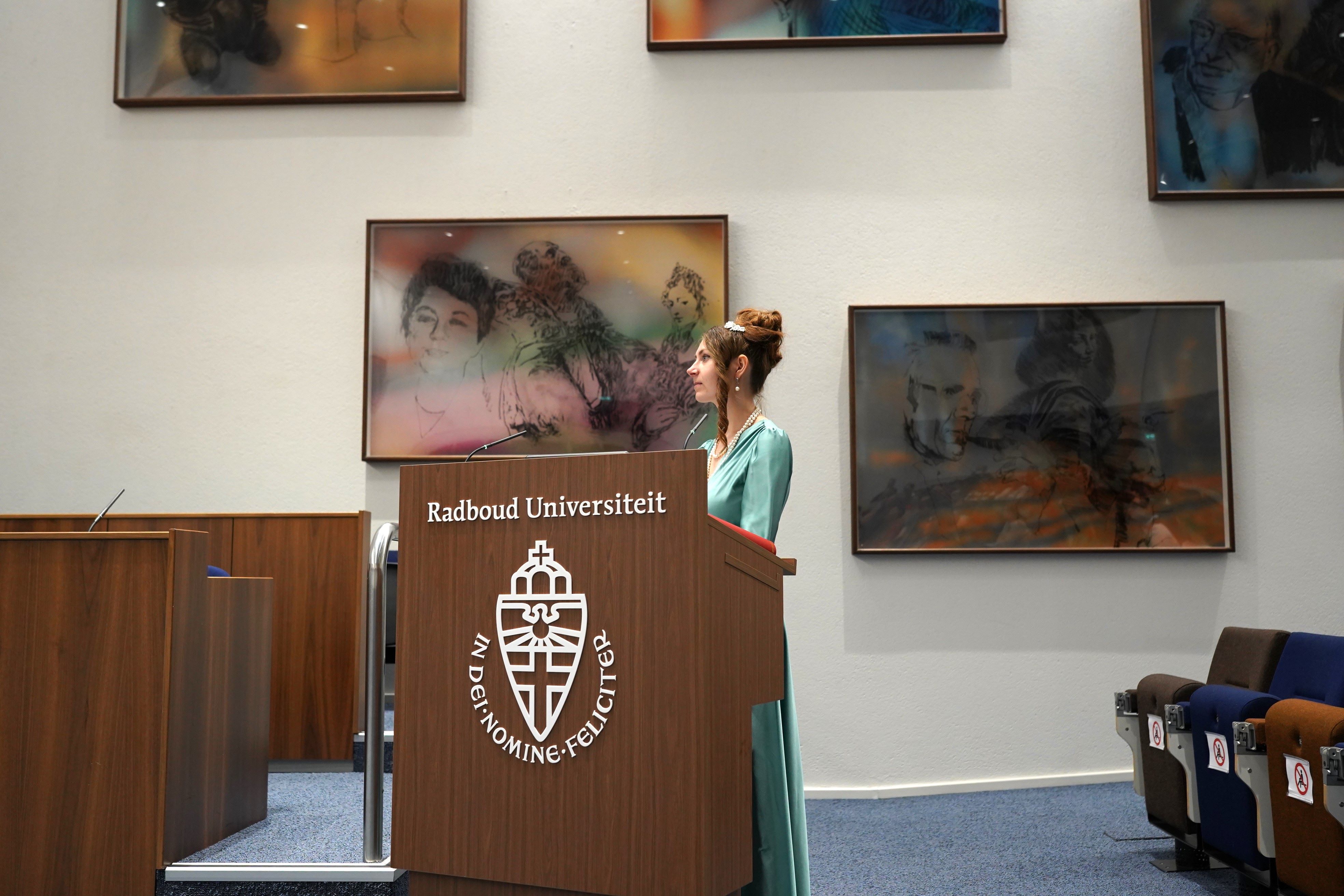PhD defence Irina Dolgikh

Irina Dolgikh
Earlier this month Irina Dolgikh successfully defended her PhD thesis “Ultrafast antiferromagnetic spin dynamics in high magnetic fields”
When you think of lasers, the first that comes to mind is surgical precision. And this is true, but even more than that is possible: resolution at very short times – the times of spin motion.
Antiferromagnets: magnets that do not stick
When you think of magnets, you probably imagine objects that attract each other or stick to your fridge. But not all magnets behave this way. Antiferromagnets is a unique class of magnetic materials. Their spins (tiny magnetic moments mostly responsible for magnetism) align in opposite directions and cancel each other out. As a result, antiferromagnets don’t exhibit the familiar magnetic attraction of common ferromagnets. Despite their “non-sticky” nature, antiferromagnets are emerging as key players in cutting-edge technologies due to their ultrafast and highly controllable magnetic properties.
Looking at spins at 1/10,000,000,000,000 of a second
To understand the mysterious behavior of antiferromagnets, researchers use femtosecond laser pulses—bursts of light lasting only a quadrillionth of a second. These ultrafast pulses allow scientists to probe how spins in magnetic materials like ferrimagnetic iron garnet and antiferromagnetic FeRh respond to rapid heating and strong magnetic fields.
Researchers observe dramatic changes in spin alignment by heating these materials across critical temperatures with a strong laser pulse.
It allowed to investigate the mysterious magnetostructural transition in an unusual metal alloy FeRh. Cold antiferromagnet became a very usual ferromagnetic material after such heating. With the pump-probe technique scientists could see how fast this process occurs at different conditions.
These transitions, mapped on a phase diagram, reveal how spins behave under varying temperature and magnetic field conditions, helping to uncover the ultrafast dynamics.
Materials in the noncollinear magnetic phase respond faster
Another example of a transformation appeared to be not as fast. Iron garnet is not a full antiferromagnet. Its magnetic moments are different and cannot cancel each other leading to some total magnetization – ferrimagnetism. However, at the very specific temperature – compensation they do. And after, another spin becomes dominant. By heating iron garnet through this compensation temperature it is possible to reverse the spins. However, up to some critical magnetic field, it was not visible within a few nanoseconds. It appeared that in a higher magnetic field, spins arrange at an angle (non-collinear state) with each other and become more ready to start the motion than when they were aligned straight up or down.
So, not all magnetic phases are created equal when it comes to speed. In noncollinear magnetic phases spins adjust more quickly to rapid changes, like those caused by laser heating. By contrast, spins in collinear phases take longer to reorient due to stronger spin-lattice interactions that slow their return to equilibrium.
Mechanical strain also plays a critical role. Tensile or compressive strain can shift phase boundaries and influence how spins respond. By fine-tuning factors like temperature, magnetic fields, and strain, scientists can precisely control magnetic phase transitions, enabling faster and more efficient spin dynamics.
Magnetic data processing
This research opens the door to new possibilities in magnetic data processing, where ultrafast spin manipulation could revolutionize the speed and efficiency of data storage and retrieval systems. Antiferromagnets, with their unique properties, are paving the way for a future where magnetic materials respond faster than ever before.
Irina Dolgikh completed both her Bachelor’s and Master’s degrees in Physics at Moscow State University, specializing in nonlinear optics and magnetooptics. She then began her PhD research in a joint position between the Ultrafast Spectroscopy of Correlated Materials Group and the High Magnetic Field Laboratory, where she investigated ultrafast magnetism in high magnetic fields. Irina was supervised by prof. dr. Alexey Kimel and prof. dr. Peter Christianen.